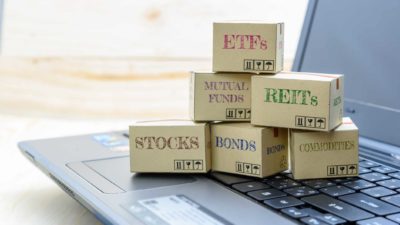Bonds aren't quite as popular an investment here in Australia as they are in the United States. For many decades in the US, it was common for investors to pursue a '60/40 portfolio'. That would be 60% of one's investments allocated to shares, with the other 40% allocated to fixed-interest bond investments.
The conventional wisdom behind this idea is that bonds act as a 'safe' alternative to shares, and provide a portfolio with downside protection in the event of a stock market crash.
The 60/40 portfolio concept took a beating in recent years, thanks to how long interest rates were at near-zero levels. But now that interest rates are back up, many investors might be looking to bonds as a viable alternative to shares in today's volatile investing world.
So today, let's discuss whether bonds are indeed a 'safe' alternative to ASX shares.
What is a bond?
Let's get this out of the way first though. A bond is essentially a loan that you can buy. When governments and companies wish to raise money, they issue bonds.
When someone buys the bond, they are loaning whatever the bond is valued at to the issuing party. This party agrees to a fixed interest rate when the bond is sold, which the buyer then receives as long as they own the bond. These periodic interest payments are sometimes known as coupons.
It's this interest income that bonds generate that makes them attractive investments for many investors.
There are wild variances in different bonds' durations. Some bonds cover three months, while others cover three decades. Some companies even issue 100-year bonds.
The appeal of a bond is its income certainty. Unlike a share, whose dividends are entirely at the discretion of a company from year to year, a bond guarantees income. The only thing that will prevent a bond from paying its promised interest is if the issuing party goes bankrupt. Indeed, failing to pay bond interest is usually the thing that will trigger bankruptcy proceedings against a company.
Are bonds 'safer' than ASX shares?
It depends. In finance, US government bonds are often described as 'risk-free'. That's because a government can't really go bankrupt, thanks to its unique ability to print its own currency. As the largest economy in the world and the custodian of the world's reserve currency, US government bonds have earned the reputation as being risk-free.
This is somewhat ironic these days because the US now periodically has internal political fights over its own debt ceiling. If the US ever fails to raise its debt ceiling, as it often threatens, then the risk-free label might be in serious jeopardy.
But putting this anomaly aside, government bonds issued by major advanced economies can usually be thought of as safer than shares from a potential capital loss perspective.
However, the same can't be said of bonds that are issued by companies. As we all know, companies can and do go bankrupt. If you are holding a bond of a company that does hit the wall, chances are you will lose the money that you have lent the company. That's not too different from someone who owns that company's shares – we know there's no such thing as a safe ASX share.
But let's assume that bankruptcy risk is out of the equation. Bonds tend to offer a more stable valuation than shares do, thanks to their guarantee of income. They also tend to provide protection against a falling stock market.
That's because when markets fall, governments often cut interest rates to stimulate economic demand. When interest rates drop, bond prices tend to rise. That's because newer bonds issued after the rate cuts will offer lower interest rates than previously issued bonds. This makes those older bonds more valuable.
Which asset class should ASX investors choose?
However, as all finance students know, there is usually a trade-off when going for an investment with less 'risk'. And that comes in the form of lower potential returns.
Over long periods of time, shares have almost always outperformed bonds and fixed-interest investments. Just last month, our chief investment officer, Scott Phillips, looked at how different asset classes have performed in the 30 years to 30 June 2023, as illustrated by the Vanguard Index Chart.
He found that a $10,000 investment in 'safe' Australian bonds would have turned into $49,394 after 30 years, compounding at an average annual rate of 5.5%.
In contrast, a $10,000 investment in not-so-safe ASX shares would have become $138,778 after those three decades, compounding at a rate of 9.2% per annum.
I know which asset class I would have rather owned.
So, put simply, high-quality bonds from reputable lenders do offer a 'safer' investment over short periods of time. But they invariably produce lower returns over long periods of time for investors than ASX shares. You tell me which is riskier to invest in over your lifetime.








